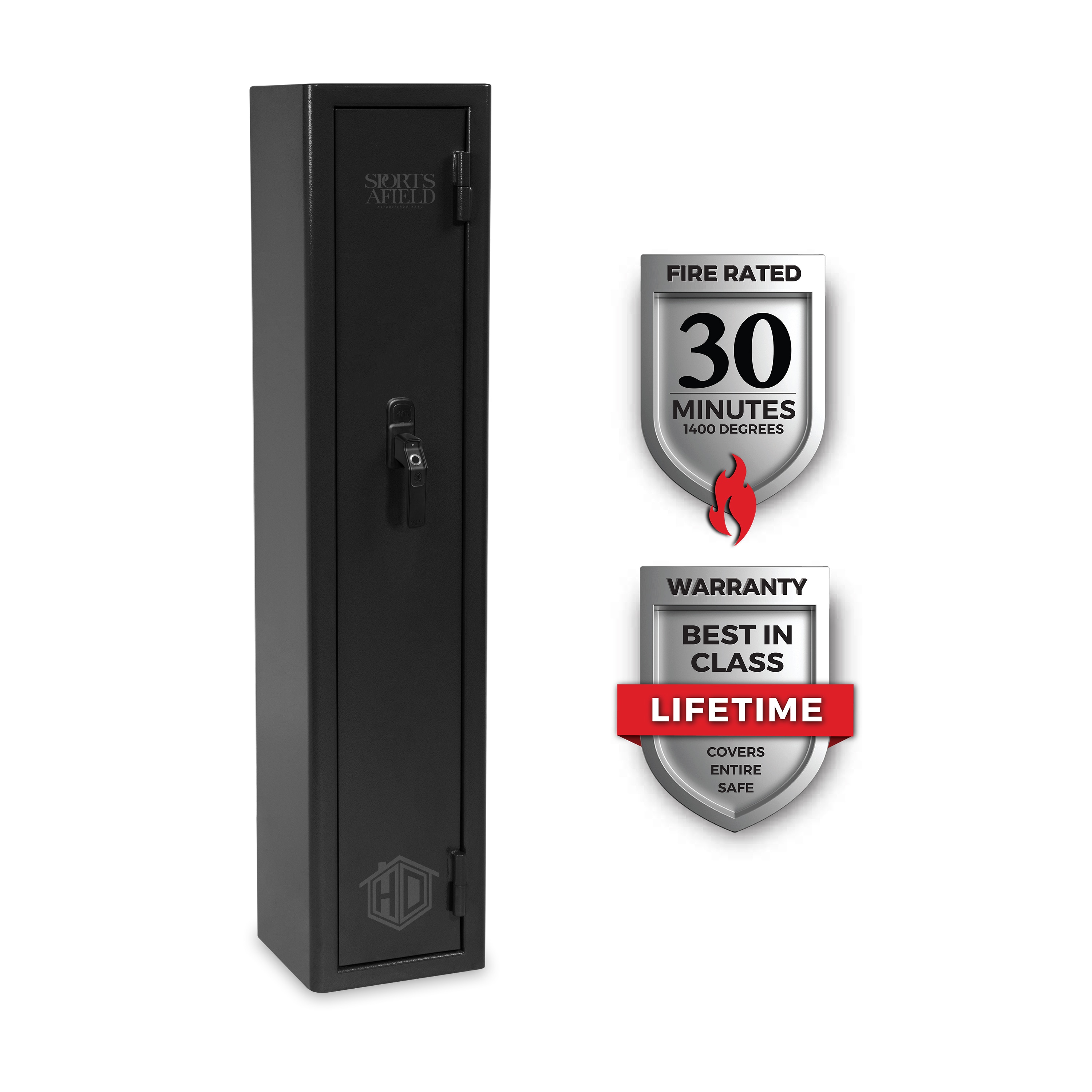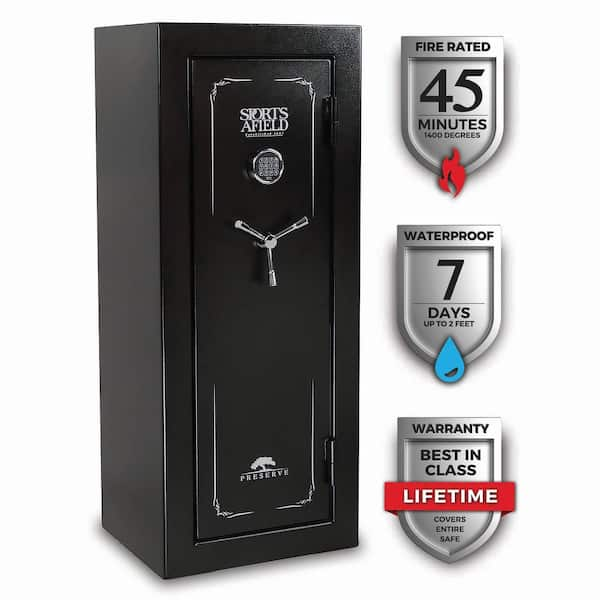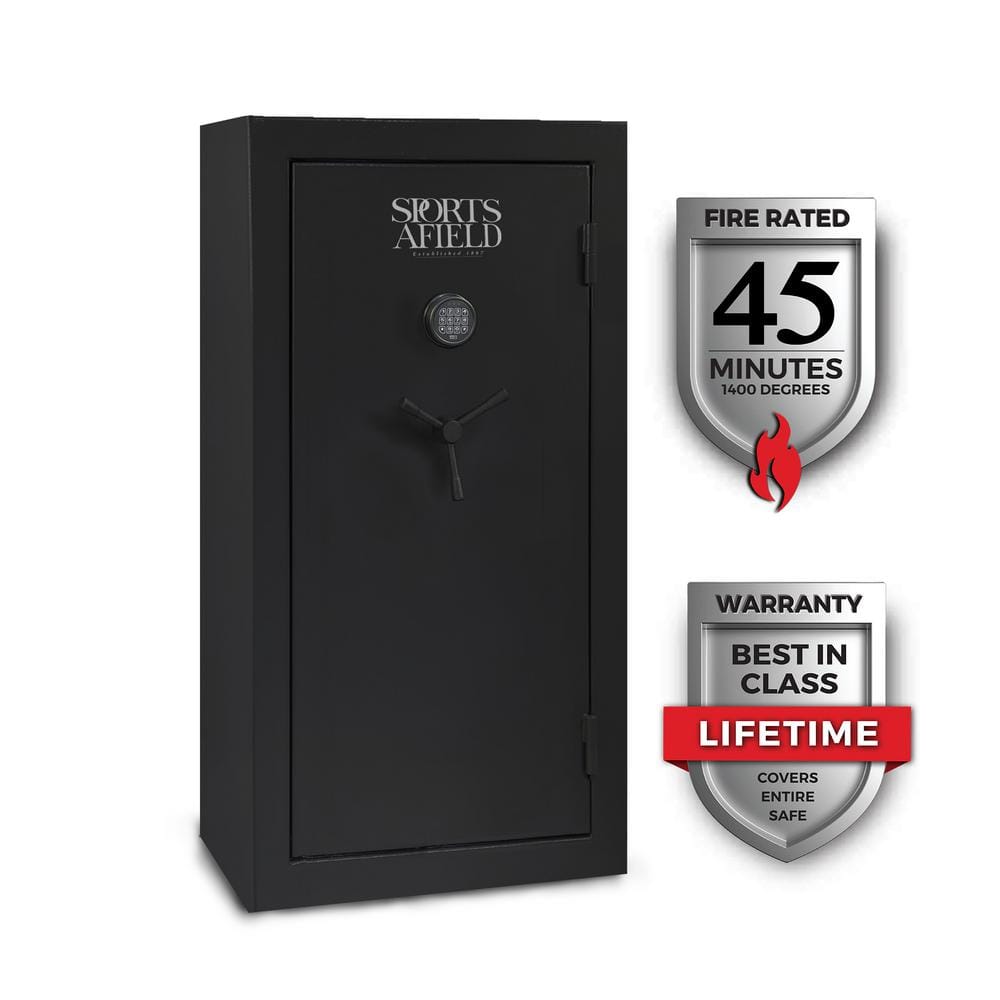When it comes to protecting your rifles, fire safety is just as important as theft protection. You might wonder, “What fire rating is best for a rifle safe?”
Choosing the right fire rating can mean the difference between losing your valuable firearms or keeping them intact after a fire. You’ll discover exactly what fire ratings mean, why they matter for your rifle safe, and how to pick the best one to keep your collection secure.
Keep reading to make sure your rifles get the protection they deserve when it counts the most.
Fire Ratings Explained
Understanding fire ratings helps you choose the right rifle safe. These ratings show how well a safe can protect your firearms from fire damage. Knowing the basics of fire ratings makes it easier to pick a safe that fits your needs.
Fire ratings are based on tests that measure heat resistance and time. This information guides you in selecting a safe with the right level of protection.
Common Fire Rating Standards
Fire ratings use standard tests to measure protection. The most common are UL (Underwriters Laboratories) and ETL. These tests rate safes on how long they can keep internal temperatures low during fire.
Ratings often show time in minutes, such as 30, 60, or 90 minutes. Higher numbers mean longer protection. Some safes also mention the maximum internal temperature allowed.
How Fire Ratings Are Tested
Testing involves placing a safe in a furnace with very high heat. The furnace can reach over 1,800°F (982°C). Inside, temperature sensors track heat levels.
The test ends when the inside of the safe reaches a set temperature or the time limit is reached. Good safes keep temperatures below 350°F (177°C), protecting guns and ammo.
Impact On Safe Performance
A higher fire rating means better protection in a real fire. It helps keep your rifles safe from heat damage. Fire ratings also affect safe weight and price.
Choosing the right rating balances safety, cost, and convenience. A well-rated safe offers peace of mind during emergencies.

Choosing The Right Fire Rating
Choosing the right fire rating for a rifle safe is key to protecting your firearms from fire damage. Not all fire ratings offer the same level of protection. Understanding your needs helps you pick a safe that matches your risk and budget. This section explains how to assess your fire risk, balance cost and protection, and what fire ratings work best for rifles.
Assessing Your Fire Risk
Start by thinking about where you keep your safe. Homes in areas with high wildfire risk need stronger fire protection. Also, consider how likely a fire might start inside your home. Kitchens and heating systems increase fire chances. The longer the safe can resist heat, the better your rifles are protected.
Balancing Cost And Protection
Higher fire ratings usually mean higher costs. Look for a safe that fits your budget but still offers enough protection. A safe with a fire rating of 30 minutes is cheaper but may not protect well in severe fires. Ratings of 60 minutes or more cost more but offer better security. Think about what you can afford and what risk level you accept.
Recommended Ratings For Rifles
For rifles, a fire rating of at least 60 minutes at 1,200°F is ideal. This rating gives your firearms enough time to survive most house fires. Some safes offer 90 minutes or more, adding extra peace of mind. Choose a rating that matches your risk and how long you want your guns safe during a fire.
Material And Construction Factors
Choosing the right fire rating for a rifle safe depends heavily on the safe’s material and construction. These elements determine how well the safe can protect firearms from heat and flames. A solid build and quality materials help maintain internal temperatures during a fire. This keeps rifles and valuables safe from damage. Understanding key factors in materials and construction helps in making a smart choice.
Fire-resistant Insulation Types
Fire-resistant insulation is vital for a rifle safe’s protection. Common types include gypsum, concrete composite, and ceramic fiber. Gypsum absorbs heat and releases moisture to cool the safe’s interior. Concrete composite offers strong resistance but adds weight. Ceramic fiber insulates well and keeps temperatures low for longer. Each type affects the fire rating and price of the safe.
Door Seals And Locking Mechanisms
Door seals block smoke, water, and heat from entering the safe. Quality seals are made from intumescent materials that expand when heated. This expansion seals gaps tightly during a fire. Strong locking mechanisms keep the door secure and prevent warping from heat. Together, seals and locks enhance fire resistance and overall safety.
Safe Size And Fireproofing
Safe size influences fireproofing effectiveness. Larger safes require thicker walls and more insulation. This adds weight but improves fire protection. Smaller safes may heat up faster inside without proper insulation. Always consider the safe’s size and how it affects the fire rating. A well-sized safe balances space and fire resistance efficiently.

Additional Safety Features
Choosing the right fire rating for a rifle safe is important. But extra safety features also protect your firearms better. These features guard against water, impact, and theft. They add layers of security beyond fire protection. Let’s explore some key additional safety features.
Water Resistance
Water damage can ruin guns and ammo inside a safe. Fires often come with water from sprinklers or hoses. A water-resistant safe keeps moisture out. Look for safes with sealed doors and moisture barriers. This helps protect your firearms from rust and corrosion.
Impact Resistance
Strong impacts can damage the safe or its contents. Safes built with heavy-duty steel and reinforced corners resist hits well. Impact resistance stops the safe from breaking open during accidents. It also protects firearms from shocks and drops inside.
Security Against Theft
Theft is a major risk for gun owners. Safes with thick steel walls and secure locking systems block thieves. Electronic locks, biometric scanners, and multiple locking bolts increase security. Anti-pry and drill-resistant features make the safe harder to break into.
Expert Tips For Maintenance
Maintaining your rifle safe properly helps keep its fire rating effective. Regular care prevents damage and ensures long-lasting protection. Follow these expert tips to keep your safe in top condition.
Regular Inspection
Check your rifle safe often for any signs of wear or damage. Look at the door seals and hinges carefully. Make sure the lock works smoothly every time. Early detection of problems avoids bigger issues later.
Proper Placement
Place your safe in a dry, cool area away from direct sunlight. Avoid spots near water pipes or heaters. Proper placement helps maintain the safe’s fire resistance. It also reduces the risk of rust and corrosion.
Fireproof Safe Accessories
Use fireproof liners or mats inside the safe for extra protection. These accessories help absorb heat during a fire. They keep your firearms and documents safe for longer. Choose items that match your safe’s size and fire rating.

Frequently Asked Questions
What Fire Rating Is Ideal For A Rifle Safe?
A 1-hour fire rating at 1400°F is ideal for rifle safes. It ensures protection of firearms and ammo from typical house fires. This rating balances safety and cost, offering reliable fire resistance without excessive expense.
How Does Fire Rating Affect Rifle Safe Security?
Fire rating indicates how long a safe protects contents from heat. Higher ratings mean longer protection during fires. It doesn’t impact theft resistance but is crucial for preserving rifles and documents in fire emergencies.
Are Higher Fire Ratings Worth The Extra Cost?
Higher fire ratings offer longer fire protection but cost more. For most users, 1-hour fire rating suffices. Extreme ratings are best for high-value collections or critical documents needing extended fire resistance.
Can Fire Ratings Vary Between Rifle Safe Brands?
Yes, fire ratings vary by manufacturer and testing standards. Always check certified ratings from recognized labs. Don’t rely on unverified claims; certifications ensure the safe meets specific fire protection levels.
Conclusion
Choosing the right fire rating keeps your rifle safe from damage. A higher rating means better protection against heat and flames. Think about how long your safe can withstand fire. Also, check if it fits your budget and needs. Remember, safety is the top priority for your firearms.
A good fire rating helps protect your investment and peace of mind. Keep your rifles secure with a safe that meets proper fire standards. Simple and smart choices make all the difference.
